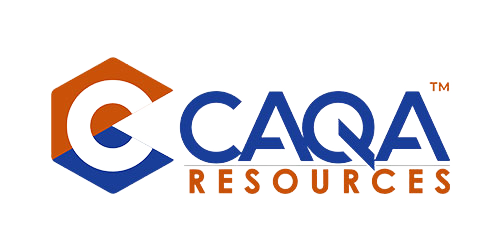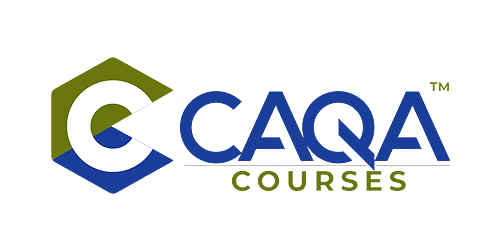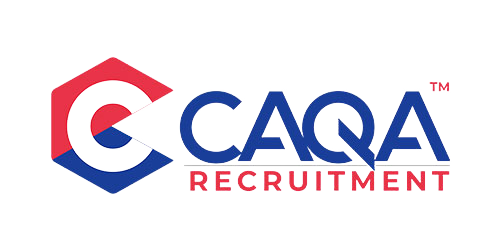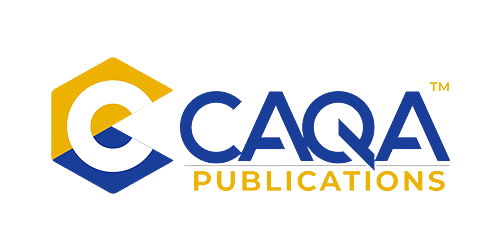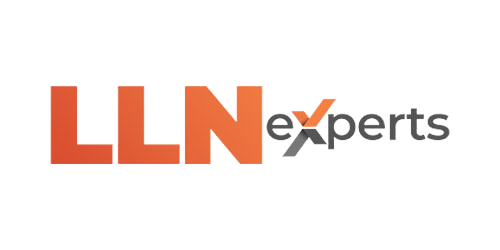In the first part of this series, we explored common myths surrounding validation in the Vocational Education and Training (VET) sector, particularly as they relate to the Standards for Registered Training Organisations (RTOs) 2015 (SRTOs). The importance of validation as a continuous, systematic process for ensuring the quality and compliance of assessment tools and systems was emphasised. In this second part, we delve deeper into additional misconceptions about validation and provide further guidance for RTOs in managing their validation practices effectively.
Myth 11: Validation Can Be Done Without Evidence of Assessment Judgements
Reality: Validation must include a review of the judgements made by assessors to ensure they are consistent, valid, and aligned with the assessment criteria.
SRTO 2015 Alignment: Clauses 1.9 - 1.11 emphasize that validation must cover all aspects of the assessment process, including the judgements made by assessors.
Explanation:
- Review of Completed Assessments: Validation should involve examining samples of completed student assessments. This ensures that the assessment judgements are based on solid evidence and meet the required standards.
- Principles of Assessment and Rules of Evidence: The evidence collected during assessments must adhere to the principles of assessment (validity, reliability, fairness, and flexibility) and the rules of evidence. Validation ensures that these principles are consistently applied in the assessment judgements.
- Consistency and Justifiability: Validation confirms that the judgements made by assessors are consistent and justifiable. This involves checking that the assessment criteria are applied uniformly and that the outcomes are fair and accurate.
- Holistic Approach: By focusing on both the tools and the outcomes of assessments, validation ensures that the entire process—from tool development to final judgement—is robust and reliable. This comprehensive approach helps maintain the integrity and quality of the assessment process.
Myth 12: Validation Can Be Done at the Last Minute
Reality: Validation must be systematic, planned, and ongoing, as outlined in Clause 1.9-1.11 of the SRTOs 2015. A well-structured validation plan ensures that:
- All training products are validated within a five-year cycle.
- At least 50% of qualifications or units of competency are validated within the first three years.
- The validation process is thorough and allows sufficient time for reviewing and making necessary adjustments to the assessment system.
SRTO 2015 Alignment: Clauses 1.9 - 1.11 emphasise the need for a systematic and ongoing validation process.
Explanation:
- Systematic Approach: Validation should be an integral part of the RTO’s quality assurance framework. This systematic approach ensures that validation is not rushed or superficial but thorough and effective.
- Planned and Ongoing: A well-structured validation plan outlines when and how validation activities will be conducted. This plan ensures that validation is ongoing and not left until the last minute, which can compromise the quality of the process.
- Five-Year Cycle: The SRTOs 2015 require that all training products are validated within a five-year cycle, with at least 50% of qualifications or units of competency validated within the first three years. This staggered approach allows for a manageable and thorough validation process.
- Thorough Review: Adequate time must be allocated for the validation process to ensure a comprehensive review of assessment tools, processes, and outcomes. This thorough review helps identify areas for improvement and ensures that the assessment system is robust and reliable.
- Continuous Improvement: Embedding validation into the RTO’s quality assurance framework supports continuous improvement. This long-term commitment ensures that validation is not just a compliance activity but a valuable tool for enhancing the quality and integrity of training and assessment practices.
Myth 13: Validation is Only Necessary for High-Risk Qualifications
Reality: All qualifications and units of competency on an RTO’s scope of registration must undergo validation, regardless of their perceived risk level.
SRTO 2015 Alignment: Clauses 1.9 - 1.11 require that validation is applied to all qualifications and units of competency, ensuring consistent quality across all levels of training.
Explanation:
- Consistent Quality: Validation ensures that the quality of assessment is consistent across all levels of training. This means that both high-risk and lower-level qualifications are subject to the same rigorous review process, ensuring that all assessments are valid, reliable, fair, and flexible.
- Comprehensive Coverage: The SRTOs 2015 mandate that all qualifications and units of competency must be validated. This comprehensive approach prevents gaps in the assessment system and ensures that all training products meet the required standards.
- Avoiding Non-Compliance: Skipping validation for “lower-risk” qualifications can lead to non-compliance with regulatory requirements. It can also result in a decrease in the overall quality of the RTO’s offerings, as potential issues in these qualifications may go unnoticed and unaddressed.
- Principles of Assessment and Rules of Evidence: Validation ensures that the principles of assessment (validity, reliability, fairness, and flexibility) and the rules of evidence are upheld at every level of training. This helps maintain the integrity and credibility of the RTO’s assessment practices.
- Holistic Approach: By applying validation equally across all qualifications, RTOs can ensure that their assessment practices are robust and reliable, regardless of the perceived risk level of the qualification.
Myth 14: Once Assessment Tools Pass Validation, They Don’t Need Further Review
Reality: Assessment tools must be regularly reviewed and updated to ensure they remain relevant and effective. Changes in technology, industry standards, or legislation can all impact the relevance of an assessment tool.
SRTO 2015 Alignment: Clauses 1.9 - 1.11 emphasise the need for continuous improvement and regular review of assessment practices to ensure they remain aligned with current industry requirements and best practices.
Explanation:
- Evolving Industry Needs: Industry standards and requirements can change over time. Regularly reviewing assessment tools ensures they remain relevant and continue to meet the needs of the industry.
- Technological Advancements: Advances in technology can impact how assessments are conducted. Regular updates to assessment tools can incorporate new technologies, making assessments more efficient and effective.
- Legislative Changes: Changes in legislation can affect the requirements for assessments. Regular reviews ensure that assessment tools comply with the latest legal requirements.
- Continuous Improvement: Even in the absence of significant changes, continuous improvement should be a core part of the validation process. This ensures that assessments are always aligned with best practices and the latest industry requirements.
-
Maintaining Relevance: Regular reviews and updates help maintain the relevance and effectiveness of assessment tools. This ensures that they continue to accurately measure the competencies they are designed to assess.
Myth 15: Validation Always Leads to Immediate Changes
Reality: While validation often uncovers areas for improvement, not all findings require immediate changes. The purpose of validation is to ensure that assessments are valid, reliable, and compliant with the SRTOs 2015. However, not every recommendation needs to be actioned immediately, especially if the assessment is already meeting the required standards.
SRTO 2015 Alignment: Clauses 1.9 - 1.11 emphasise the importance of systematic validation and continuous improvement, allowing RTOs to prioritise changes based on risk, urgency, and impact.
Explanation:
- Prioritisation of Improvements: Validation provides an opportunity to prioritise areas for improvement based on their risk, urgency, and impact. This means that some changes may be scheduled for the next validation cycle, while others may require immediate attention.
- Continuous Improvement: The outcomes of validation should inform the RTO’s continuous improvement processes. This involves making changes in a measured and planned way rather than reacting to every finding immediately. This approach ensures that improvements are sustainable and effectively integrated into the assessment system.
- Risk Management: Not all validation findings pose an immediate risk to the quality or compliance of the assessment system. By assessing the level of risk associated with each finding, RTOs can determine the appropriate timeline for implementing changes.
- Strategic Planning: Implementing changes based on validation findings should be part of a strategic plan. This plan should consider the resources available, the potential impact of changes, and the overall goals of the RTO. This strategic approach helps ensure that improvements are meaningful and aligned with the RTO’s objectives.
- Maintaining Standards: While some findings may not require immediate action, it is important to ensure that the assessment system continues to meet the required standards. Regular validation and continuous improvement help maintain the integrity and quality of the assessment practices.
Myth 16: No Need to Do Validation if Regulatory Body Has Audited You and Made You Compliant Until the Next Audit Notice
Reality: Ongoing validation is essential, even if a regulatory body has audited you and found you compliant. Validation is a continuous process that ensures the quality and integrity of assessment practices between audits.
SRTO 2015 Alignment: Clauses 1.9 - 1.11 emphasize the importance of systematic and ongoing validation to maintain compliance and improve assessment practices continuously.
Explanation:
- Continuous Quality Assurance: Validation is not just about meeting regulatory requirements during audits. It is an ongoing process that ensures the continuous quality and integrity of assessment practices. Regular validation helps identify and address issues before they become significant problems.
- Maintaining Compliance: Even if a regulatory body has found you compliant, ongoing validation is necessary to maintain that compliance. Standards and requirements can change, and regular validation ensures that your practices remain up-to-date and aligned with current regulations.
- Proactive Improvement: Waiting for the next audit notice to conduct validation can lead to complacency. Proactive and regular validation helps RTOs stay ahead of potential issues and continuously improve their assessment practices.
- Risk Management: Regular validation helps manage risks by identifying and addressing potential issues early. This proactive approach reduces the likelihood of non-compliance and ensures that the RTO is always prepared for audits.
- Embedding Quality Culture: Ongoing validation fosters a culture of quality and continuous improvement within the RTO. It ensures that all staff are engaged in maintaining high standards and are committed to delivering quality training and assessment.
Myth 17: Validation Can Be Done Solely by Internal Staff
Reality: While internal validation is important, SRTOs 2015 (specifically Clause 1.11) stipulate that independent validation is a key requirement for training products, especially for those on the scope that lead to high-risk or high-stakes qualifications. Independent validators must not have been involved in the delivery or assessment of the training product being validated. This requirement ensures that there is an objective and impartial review of assessment tools and practices.
SRTO 2015 Alignment: Clause 1.11 requires that validation be conducted by individuals who are not directly involved in the delivery or assessment of the training product being validated, ensuring an objective and impartial review.
Explanation:
- Objective Review: Independent validation ensures that the assessment tools and practices are reviewed objectively. Validators who were not involved in the delivery or assessment can provide an unbiased perspective, which is crucial for maintaining the integrity of the validation process.
- Fresh Perspectives: Engaging with external validators can bring fresh perspectives and industry insights. This can enhance the RTO’s ability to align with industry expectations and improve the quality of its assessment practices.
- Compliance with Standards: Clause 1.11 of the SRTOs 2015 mandates that independent validation is necessary for certain training products. This ensures that the validation process is compliant with regulatory requirements and that the assessments are fair, valid, and reliable.
- Enhanced Credibility: Independent validation adds credibility to the RTO’s assessment practices. It demonstrates a commitment to quality and continuous improvement, which can enhance the reputation of the RTO within the industry.
- Collaborative Approach: While internal staff can participate in the validation process, involving external validators fosters a collaborative approach. This collaboration can lead to the sharing of best practices and the development of more effective assessment strategies.
Myth 18: Validation is the Same as Moderation
Reality: Validation and moderation are distinct processes with different purposes. Validation focuses on ensuring the quality and integrity of assessment tools and practices, while moderation ensures consistency and fairness in the application of assessment judgments.
SRTO 2015 Alignment: Clauses 1.9 - 1.11 emphasise the importance of systematic validation, while moderation is a separate process aimed at ensuring consistent assessment decisions.
Explanation:
- Purpose:
- Validation: The primary purpose of validation is to ensure that assessment tools and practices are valid, reliable, fair, and aligned with the requirements of the training package or accredited course. It involves reviewing assessment tools, processes, and evidence to ensure they meet the required standards.
- Moderation: The purpose of moderation is to ensure consistency and fairness in the application of assessment judgments. It involves comparing and discussing assessment decisions made by different assessors to ensure they are consistent and aligned with the assessment criteria.
- Focus:
- Validation: Focuses on the design and implementation of assessment tools and processes. It ensures that the tools are capable of accurately measuring the required competencies.
- Moderation: Focuses on the outcomes of assessments. It ensures that assessors apply the assessment criteria consistently and make fair and accurate judgments.
- Timing:
- Validation: Typically occurs before and after assessments are conducted. It is an ongoing process that ensures the continuous improvement of assessment practices.
- Moderation: Usually occurs during or after the assessment process. It involves reviewing and comparing assessment judgments to ensure consistency.
- Participants:
- Validation: Involves a range of stakeholders, including internal staff, industry experts, and external validators. It requires a systematic and comprehensive review of assessment practices.
- Moderation: Involves assessors and sometimes external moderators. It focuses on ensuring that assessment judgments are consistent and fair across different assessors.
Note: Moderation is not a mandatory requirement under the Standards for Registered Training Organisations (SRTOs) 2015. While the SRTOs emphasise the importance of quality assurance in training and assessment processes, organisations have the flexibility to implement their own strategies for ensuring consistency and reliability in their programs without being obligated to adhere to formal moderation processes.
Myth 19: Validation Can Be Completely Outsourced to Consultants
Reality: While consultants can play a valuable role in the validation process, it is essential for RTOs to be actively involved. The SRTOs 2015 require that RTOs maintain ownership and oversight of their validation processes to ensure they are aligned with the organization’s goals and regulatory requirements.
SRTO 2015 Alignment: Clauses 1.9 - 1.11 emphasise the importance of systematic validation, which requires active involvement from the RTO to ensure continuous improvement and compliance.
Explanation:
- Ownership and Oversight: RTOs must maintain ownership and oversight of their validation processes. This ensures that the validation activities are aligned with the RTO’s goals, values, and regulatory requirements. Outsourcing validation entirely can lead to a disconnect between the RTO’s practices and the validation outcomes.
- Active Involvement: While consultants can provide expertise and an external perspective, RTO staff should be actively involved in the validation process. This involvement ensures that the staff understand the validation findings and can implement necessary changes effectively.
- Continuous Improvement: Validation is an ongoing process that supports continuous improvement. RTOs need to be engaged in this process to ensure that improvements are sustainable and integrated into their practices. Consultants can assist, but the RTO must drive continuous improvement efforts.
- Compliance: The SRTOs 2015 require that validation processes are systematic and ongoing. This requires active participation from the RTO to ensure that validation activities are conducted regularly and that the findings are used to enhance the quality of training and assessment practices.
- Building Internal Capacity: Involving internal staff in the validation process helps build their capacity and understanding of quality assurance practices. This internal capacity is crucial for maintaining high standards and ensuring that the RTO can conduct effective validation independently in the future.
Myth 20: Validation is a Bureaucratic Process and Does Not Have a Role in Continuous Improvement
Reality: Validation is a crucial component of continuous improvement in training and assessment practices. It is not merely a bureaucratic requirement but a systematic process that ensures the quality and integrity of assessments.
SRTO 2015 Alignment: Clauses 1.9 - 1.11 emphasise the importance of systematic validation as part of the continuous improvement process.
Explanation:
- Quality Assurance: Validation is a key quality assurance mechanism that helps ensure assessments are valid, reliable, fair, and aligned with industry standards. This process helps maintain high standards and improves the overall quality of training and assessment.
- Identifying Areas for Improvement: Through validation, RTOs can identify strengths and areas for improvement in their assessment practices. This feedback is essential for making informed decisions about how to enhance the quality of training and assessment.
- Continuous Improvement: Validation is an ongoing process that supports continuous improvement. By regularly reviewing and updating assessment tools and practices, RTOs can ensure they remain relevant and effective, adapting to changes in industry requirements and best practices.
- Engagement and Collaboration: Validation involves engaging with various stakeholders, including trainers, assessors, industry representatives, and external validators. This collaborative approach fosters a culture of quality and continuous improvement within the RTO.
- Compliance and Best Practices: Regular validation ensures that RTOs comply with regulatory requirements and align with best practices. This proactive approach helps prevent non-compliance and enhances the credibility and reputation of the RTO.
By understanding and implementing these principles, RTOs can ensure that their validation processes are not just bureaucratic exercises but valuable tools for continuous improvement and quality assurance.









